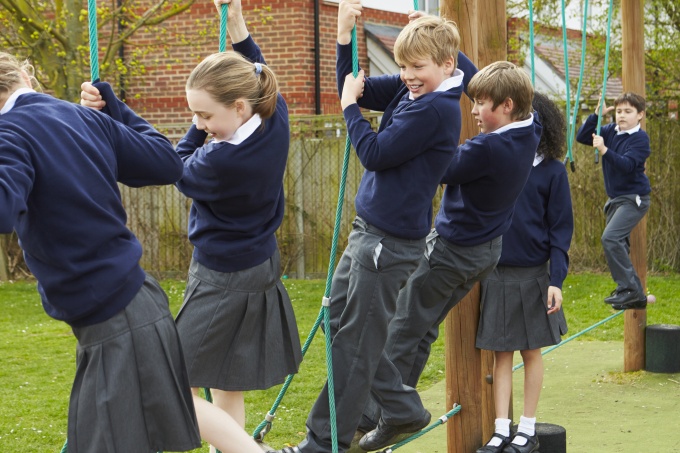This article, written by Thrive's Managing Director Anna Smee, was first featured in Schools Week
The procession of crises afflicting the UK today seems to have no end, and children are as adversely affected as their parents and carers. Inflation, cost of living, rising mortgage rates… Many households are now having to deal with economic emergencies that are tearing at the very fabric of family life, and too many children are taking on these very adult worries and concerns, affecting their mental health and wellbeing.
Working with Supporting Education Group, we surveyed 600 staff with responsibility for wellbeing, including heads and deputy heads, teachers, heads of department and year, DSLs and SENCos. Just over half of responses were from secondary schools, with 43 per cent from primaries.
Pupil mental health and wellbeing was rated the most challenging issue currently affecting their schools. More challenging, in fact, than managing finances, delivering SEND provision, pupil behaviour and attendance, learning and attainment, safeguarding and staff recruitment and retention.
Worse, leaders expect pressures on children’s mental health and wellbeing to increase in the coming months and years. They see training to identify and manage these issues as the key tool for the future.
Although schools are trying to prioritise this pressing issue, more than one-quarter aren’t measuring the effectiveness of their approaches. The risk here is clear; if schools don’t have a clear view of the impact of their wellbeing and mental health strategies this could imperil behaviour management. In turn, this could have knock-on effects for staff wellbeing and retention as well as pupil attainment.
As part of school improvement strategic assessment, planning and review, wellbeing can be measured by generating high-quality quantitative and qualitative data. By developing a toolkit and a whole-school culture of emotional health and mental wellbeing, schools can take a proactive and rigorous approach to improving outcomes and ensuring measures are taken to respond to escalating need.
The approach could include:
Gathering data
Surveys and questionnaires covering various aspects of wellbeing including physical health, mental health, emotional wellbeing, social relationships and academic engagement can provide valuable insights into the overall wellbeing of pupils.
Student and parent voice surveys and diagnostic tests across the whole school are already popular tools and these measures are endorsed in the Education Endowment Foundation. Their guidance report, Improving Social and Emotional Learning in Primary Schools provides helpful recommendations for how schools should embed social and emotional learning together with a framework that can be used to audit leadership practice, curriculum, everyday teaching and whole-school ethos and activities.
Factor in attainment
While a happy and successful school career isn’t all about academic performance, the data from test results and grades can be a valuable tool for picking up any patterns or changes that might flag up the need for support, especially when it is triangulated with other quantitative and qualitative data.
A deep dive into attendance and behaviour
Close monitoring of children’s attendance and behaviour patterns can be weathervanes of pupil wellbeing. If pupils are frequently absent, show changes in behaviour including increases in disciplinary issues then these could strongly indicate wellbeing concerns that need your attention.
Listening to the children
Regular, open-ended conversations with children and young people using non-judgemental and supportive language will help you and your colleagues build a deeper understanding of wellbeing. The impact of this approach is difficult to measure on its own but can add valuable context to your quantitative data.
Benchmarking the impact of interventions
Evidence-based wellbeing programmes and interventions are there to be drawn on to support your work to improve pupil wellbeing, but their effectiveness is limited unless you are able to measure it. By measuring changes in specific wellbeing indicators before and after the implementation of these programmes, schools can gauge their impact on pupil wellbeing.
South Green Junior School in Billericay is putting the measurement of its wellbeing interventions at the centre of its practice. It allows them to track behaviour and emotional health improvements and their positive impact on attendance, behaviour and academic attainment. The record of improvements made by the children will be part of the school’s evidence of its commitment to wellbeing and behaviour when it is next inspected.
Our survey feedback reinforces growing calls from across the sector to elevate the measurement of children’s wellbeing and mental health to the same level as academic assessment.
But if the system doesn’t currently require schools to measure wellbeing in the same rigorous way as they do attainment then the impetus for change will, of course, be far less powerful. We know that good wellbeing and mental health underpins good academic attainment, so we need schools and government to foreground interventions that support the former – and encourage the adoption of measurement approaches that make it clear what really works.
Over to you
Click here to schedule a Discovery Call with your regional expert to find out how Thrive could help boost pupil wellbeing in your setting. Designed to fit in around your schedule, these free 30-minute conversations via Teams give you a chance to have your questions answered and decide if our service is a fit for your needs.

_680.jpg)

(7)_680.jpg)
_680.jpg)
